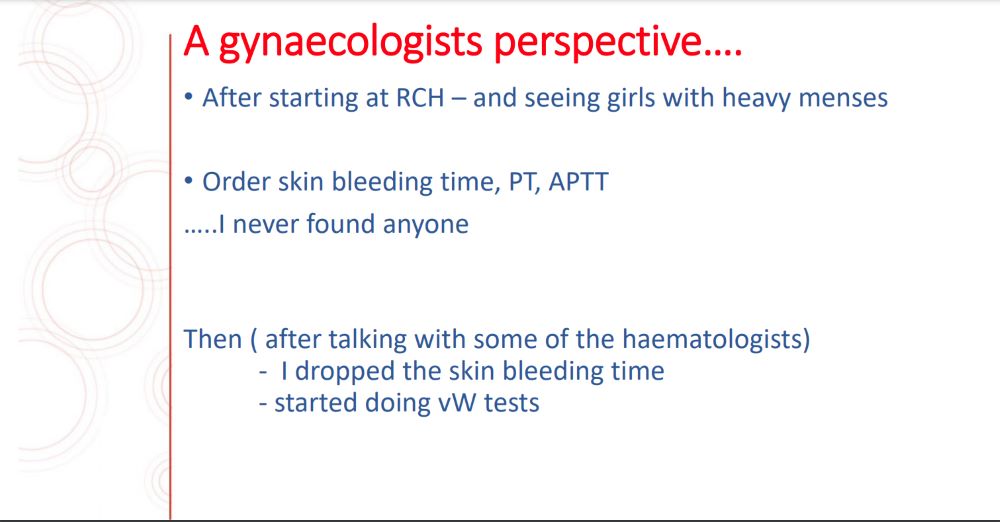Plenary – Women and girls with bleeding disorders
Chair ~ Dr Meredith Wiggins
Personal perspectives on the challenges and issues of living with a bleeding disorder
~ Shauna
~ Cheryl
Medical perspectives on diagnosis, assessment, treatment and care
~ Gynaecologist: Prof Sonia Grover
~ Haematologist: Dr Briony Cutts

SUZANNE O’CALLAGHAN
Suzanne O’Callaghan is HFA Policy Research and Education Manager
The challenges and issues for women and girls with bleeding disorders were highlighted in the plenary, which explored both the personal experience and the complexities of clinical management.
Shauna and Cheryl gave compelling accounts of what it has been like for them to live with a bleeding disorder, the complications they have had to deal with and what they hope for in the future. Shauna’s story is published in this issue of National Haemophilia.
Although there have been advances in medical management in recent years, both Professor Sonia Grover and Dr Briony Cutts commented on the high level of under-diagnosis in women and girls and the value of Bleeding Assessment Tools (BATs) as a support to taking a bleeding history, along with checking the family history for abnormal bleeding. While a general practitioner could undertake initial laboratory testing, it was important that a specialist laboratory should process the testing and the woman or girl should be referred to a specialist to interpret the results.
Anaemia or iron deficiency is a common complication of a bleeding disorder in females and Briony Cutts noted that it is a significant outcome that can impact on cognitive as well as other physical functioning.
Individual data is vital to understanding the impact of bleeding disorders in women and girls as well as managing their bleeding disorder over their lifetime. Briony Cutts recommended that women and girls be registered with their Haemophilia Treatment Centre and with the Australian Bleeding Disorders Registry (ABDR).
ALEX KLEVER
Alex Klever is Clinical Nurse Consultant – Haemophilia at the Queensland Haemophilia Centre, Royal Brisbane & Women’s Hospital
Professor Sonia Grover spoke about her experiences – suspecting that women and girls were being underdiagnosed and trying to find more effective ways to identify those who had bleeding disorders. Early in her career the basic teaching was to consider a bleeding disorder in teenagers with heavy menstrual bleeding but then no further questions were being asked. She herself started doing blood clotting time testing such as APPTT and PT but these tests did not find anyone with a bleeding disorder. But she changed tack and then started performing specific von Willebrand testing. She undertook some audits at her adult women’s hospital and found that a lot more women with heavy menstrual bleeding qualified for bleeding disorder testing than were being tested and that a large number who were tested had abnormal results and some were even diagnosed with an inherited bleeding disorder.

Sonia highlighted:
Dr Briony Cutts spoke as well about the use of the Bleeding Assessment Tool developed by the International Society on Thrombosis and Haemostasis (ISTH-BAT). This tool is easy to use and, with the combination of taking a clinical history, can be useful in diagnosing bleeding disorders or to establish if bleeding disorders are normal or abnormal.
Haemophilia Foundation Australia acknowledges the Traditional Owners and Custodians of Country throughout Australia, the land, waters and community where we walk, live, meet and work. We pay our respects to Elders past and present and extend that respect to all Aboriginal and Torres Strait Islander peoples.
Sign up for the latest news, events and our free National Haemophilia magazine